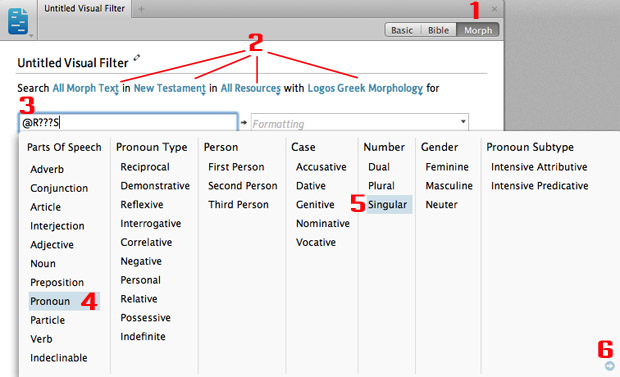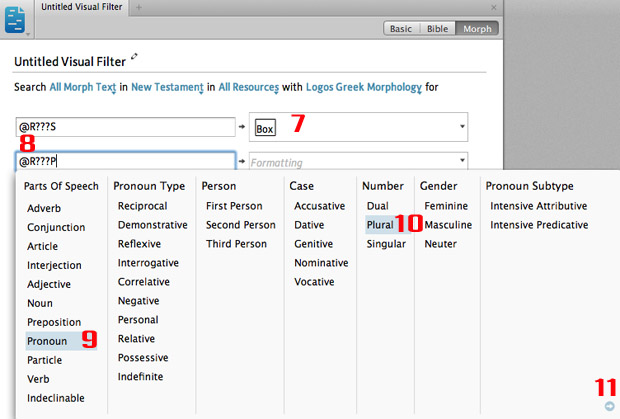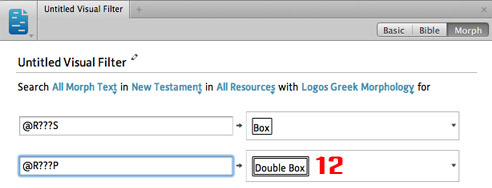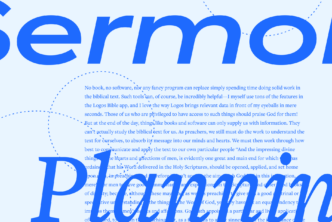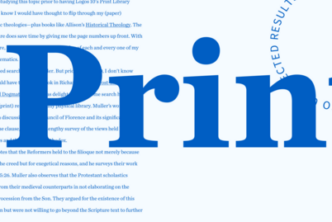Thank you for reading this blog post. Now here’s a question. Did I just thank you, an individual reader, or did I thank you all as the collective group of readers? In other words, is the you singular or plural? You can’t answer decisively because you in English can be either. The language of the New Testament, Greek, makes a distinction between singular and plural pronouns, but not all English Bibles maintain that distinction. They use you for both singular and plural occurrences.
For example, Luke 22:31-32 is translated as follows in the NASB:
“Simon, Simon, behold, Satan has demanded permission to sift you like wheat; but I have prayed for you…”
Are these you’s singular or plural or both? Impossible to say for certain just by observing English. A Morphological Visual Filter, however, can help us easily answer the question.
- Choose File | Visual Filter.
- Select Morph as the filter type (1).
- Select from the drop down lists All Morph Text, New Testament, All Resources, and Logos Greek Morphology (2).
- Type the @ symbol in the Find box which alerts Logos that this is going to be a Morph search (3).
- Select Pronoun from the Part of Speech drop down list (4).
- Select Singular from the Number column (5).
- Click the arrow icon to save the morph code in the Find box (6).
- Select from the Formatting list a style such as Box (7).
- Type the @ symbol in the additional Find box that appears (8).
- Select Pronoun from the Part of Speech drop down list (9).
- Select Plural from the Number column (10).
- Click the arrow icon to save the morph code in the Find box (11).
- Select from the Formatting list a style such as Double Box (12).
You have just instructed Logos to place a box around all singular pronouns and a double box around all plural pronouns in the New Testament of Bibles containing the Logos Greek Morphology. Now open an English Bible like the ESV, NASB, NKJV, or LEB to Luke 22:31. The filtering on the underlying Greek morphology is shining through to the English surface text which certainly assists our study of any passage!
Do you see anything interesting in Luke 22:31-32?
If you enjoy this type of power usage of Logos then you’ll find Camp Logos 2 Live DVD Training very helpful. It’s packed full of instruction and application on how to use Logos original language features for the English student.

